How to Create a Culture of Innovation
Diversity creates a powerful dynamic between leaders and teams who know how to unlock each other's contributions.

Diversity creates a powerful dynamic between leaders and teams who know how to unlock each other's contributions.

Get Involved
Our authors are what set Insurance Thought Leadership apart.
|
Partner with us
We’d love to talk to you about how we can improve your marketing ROI.
|

Shahzadi Jehangir is an innovation leader and expert in building trust and value in the digital age, creating scalable new businesses generating millions of dollars in revenue each year, with more than $10 million last year alone.
Why won't patients take their meds? It's an enormous problem, and the solution--still being sorted out--is exceptionally complicated.

Noncompliance is one of the greatest challenges and opportunities for savings and improved medical outcomes. One reason noncompliance has been such a difficult issue is its complexity. Patients don't take their medications for a multitude of reasons. Reasons for noncompliance vary from patient to patient. That rules out a one-size-fits-all solution. Noncompliance can be more of a challenge for workers' compensation claims, potentially because of perceived HIPAA privacy rules. Because of an approach that appears to mirror “don’t ask, don’t tell,” little is known by many of the workers' compensation physicians about the drugs that are being prescribed for chronic or underlying conditions to their industrially injured patients. Or, if doctors do discuss such issues with the patients, few if any include such information in their reports to the insurance companies. Claims examiners also do not want to know about underlying medical conditions because of their fear of being roped into paying for this kind of treatment even if it may facilitate a faster recovery from an industrial injury. (Not knowing about underlying conditions, they are also limiting their ability to identify potential catastrophic claims early in the age of the claim.) Here are some of my thoughts and commentary on noncompliance:
Here is an article from Doug Benner, which is worth the read for good insight into this very complex issue: The number of patients who are noncompliant with regard to their pharmacy usage has reached epidemic proportions, and doctors' inability to provide optimal care as a result has mushroomed into one of the most pressing problems in healthcare today.
One upshot: Poor medication compliance is implicated in more than 125,000 U.S. deaths per year. Yet compliance — which is used interchangeably with the term “adherence,” although the latter term is gaining ground — has been exhaustively studied. More than 40,000 peer-reviewed papers on the subject have been published, “yet the rates of poor adherence have not changed significantly over the past several decades and continue to remain at an unacceptable level,” observes URAC, a healthcare accreditation organization, in a white paper prepared for industry leaders. Or, as former Surgeon General C. Everett Koop once put it with his customary forthrightness, “Drugs don't work in people who don't take them.” The $290 billion question — $290 billion being how much poor compliance is estimated to cost the U.S. healthcare system each year — is: Why? See also: How to Pick a Health Plan (Carefully) An unbelievably complicated problem One reason noncompliance has been such a tough nut to crack is its daunting complexity. Patients don't take their medications for a multitude of reasons, many of them emanating from the murky depths of human psychology and many of which the patients (not to mention medical researchers) may not fully understand. To complicate matters, these reasons vary from patient to patient. That rules out a one-size-fits-all solution. Internist William Shrank, MD, MSHS, chief scientific officer and chief medical officer of Provider Innovation and Analytics at CVS Caremark, has served as lead author or coauthor in more than 100 studies on patient compliance with medication. His conclusion: “There is no silver bullet.” Researchers have analyzed the steps involved in compliance to better understand where the process breaks down. First, the patient must receive the right prescription from a doctor or another provider. The new prescription must then be filled, a seemingly simple act that can be a major barrier to compliance. The patient must then make it through the first six months on the medication, when the risk for noncompliance is highest. If the medication is for a chronic condition, it must then be taken as intended — indefinitely. “Adherence is the result of getting through these four steps successfully,” notes the RAND Corporation, a nonprofit research organization, in a report aimed at policymakers in Washington, “and a single policy option is not going to address each of these challenges to adherence.” To thicken the plot, a patient's unique cluster of reasons for not complying at any given time isn't stable. With the loss of a job, for example, medications may become unaffordable, so the patient stops taking them, cuts the pills in half to make them last longer or skips some doses. After a divorce, job loss or any traumatic event, depression may set in; taking medication as directed may then be the last thing on the patient's mind. Or, a compliant patient may suffer a medication-related adverse event. As a result, she may stop taking her pills, as up to 20% of patients do because of perceived side effects. Does the patient tell the doctor? Probably not. Why? The doctor is so busy; she doesn't want to be a bother. Or, she doesn't like the doctor, so this is how she retaliates. Or, she decides that her ill effects are a sign that she's taking too many drugs, so she goes off-regimen. Or, she consults with a friend on a social networking website for patients with similar chronic conditions, and the friend advises her to try alternative medicine instead. “Is it widely known that adherence is a cluster of behaviors and not a single construct?” asks internist John F. Steiner, MD, MPH, research director at Kaiser Permanente's Institute for Health Research in Denver and a thought leader on medication compliance issues. “No, that's actually a radical claim.” It may be radical, but researchers are putting patients, doctors and the healthcare system itself under a microscope to better understand this ever-shifting cluster of behaviors and why it so often results in noncompliance. While many questions remain unanswered, here's what has been learned to date. Patient beliefs and behaviors are often barriers Patients with chronic conditions may spend only a few hours a year in your office, but they spend roughly 5,000 waking hours each year living the rest of their lives. During that time, out of touch with their doctors and generally unmonitored by the healthcare system, many are allowed to quietly, invisibly slip off their regimens. In 2009, a team of researchers at Kaiser Permanente combed through much of the vast literature on compliance and distilled the sea of data down to several important patient-related barriers. They include forgetfulness; lack of knowledge about the medication and its use; cultural, health and religious beliefs about the medication; denial or ambivalence regarding the state of their health; financial challenges; lack of health literacy; and lack of social support. Forgetfulness is the No. 1 barrier to compliance, experts believe, although a survey of 10,000 patients found that only 24% ascribed noncompliance to forgetfulness. Up to 20% failed to take medications because of perceived side effects, 17% had cost issues and 14% didn't feel the need to take medication because they believed it would have little to no effect on their disease. Among patients with chronic conditions (such as high blood pressure and high cholesterol), noncompliance tends to be highest if symptoms aren't experienced. Myopic? Perhaps. But when doctors are patients, they tend to act just like everyone else. Steiner likes to ask an audience of physicians for a show of hands of who has ever taken an antibiotic. Many hands are raised. He then asks how many doctors took the full course of antibiotics even after their symptoms abated. Many hands go down. Even the Sickest Patients May Not Take Their Drugs Noncompliance is plentiful in patients who exhibit symptoms, too — even for life-threatening conditions. Not even a brush with death is enough to get some patients to stick to their regimens. According to one study, after hospitalization for acute MI, about 24% of patients still hadn't filled their cardiac medication prescription a week after being discharged. In another study, among patients discharged with prescriptions for aspirin, statins and beta-blockers after an episode of acute MI, about 34% stopped at least one medication and 12% stopped all three medications within a month. A third study found that only about 40% of patients were still taking statins two years after hospitalization for acute coronary syndrome. Compliance was even lower for patients taking statins for chronic coronary artery disease. A major reason why many patients go off-regimen is the cost of drugs. But even when patients are given drugs gratis, compliance improves only slightly. One much-discussed study looked at 2,845 Aetna health plan members discharged from the hospital after an acute MI episode who were given all of their drugs — statins, beta-blockers, ACE inhibitors, ARBs — for free. That was then compared with 3,020 Aetna enrollees who had the usual prescription coverage. In the usual-coverage group, compliance rates were 36% 49%. But without the cost barrier, the rates were only 4% to 6% higher. What could account for this underwhelming result? Could depression play a role? Although the investigators noted cardiac-related comorbidities of patients at baseline, they didn't ask about depression. Yet a meta-analysis of 31 studies that collectively included 18,000 people found that depressed patients with a variety of chronic illnesses, including diabetes and heart disease, had 76% greater odds of being noncompliant compared with patients who weren't depressed. At least you can understand why depressed patients may lack the motivation to stay on regimen, but, confoundingly, so do many patients who aren't depressed. As Shrank and cardiologist Lisa Rosenbaum, MD, noted in a 2013 paper: “Though patients may be forthcoming about the more practical challenges (to adherence), the psychological barriers are tougher to identify and articulate. Patients don't generally tell their physicians, ‘Every time I look at that pill bottle, it reminds me that I'm ill,’ or ‘I tend to discount future benefits as long as I feel well today.’ Such underlying psychological mechanisms probably contribute to nonadherence far more than we realize and help explain why existing interventions have brought only modest improvements.” In reality, however, the teamwork concept isn't working out too well. One reason is a chronic lack of time. The mean duration of a primary care visit ranges from 7.6-17.6 minutes. To be efficient, the doctor must control the conversation, with less time for listening and discussing topics such as medication reviews and preventive care. Even if more time were available, it's not what every patient wants. In one study of doctor-patient relationships, behavioral economists used game-theory techniques to identify the factors affecting treatment decisions in patients with a life-threatening disease — in this case, breast cancer — who were considering adjuvant therapy. They found that when patients disregarded their doctor's treatment recommendations, the doctors responded by telling them in more detail about the benefits of treatment. However, this produced a perplexing result: The more information the patients received, the less likely they were to be compliant. The researchers conceded that, “Patients want more specific disease and treatment information,” but “the provision of this information might lead to therapy decisions which diverge from the physicians' recommendations.” But the larger problem is that too little information is offered to patients who want — and need — more. The average time that a doctor spends discussing all aspects of a newly prescribed medication is a mere 49 seconds. Surveys show that no medication instructions are given by physicians in 19% to 39% of prescriptions; in observational studies, 17% to 25% of prescriptions are not accompanied by instructions from the doctor. For a new prescription, doctors discuss dosing directions in fewer than 60% of cases and review potential adverse events — a major reason why patients quit taking their drugs — only 33% of the time. Nor do busy doctors typically have the time or skill to sit down with a patient and tease out his or her unique personal barriers to compliance, which is why so much of their advice goes in one ear and out the other, contends behavioral psychologist Kim Lavoie, PhD, associate professor at the University of Quebec at Montreal, co-director of the Montreal Behavioral Medicine Centre and an expert on motivating patients to stick to their regimens. “Health is not necessarily the patient's main priority,” Lavoie observes. “If you have a 40-year-old woman who smokes, and you want to get her to quit, what's likely to be her No. 1 concern? The answer,” she says, “is weight gain. If the conversation doesn't address that obstacle, my prediction is that she's not going to quit." The authors of a paper that analyzes the doctor-patient interaction note, “Doctors' communication style can positively influence (patient) beliefs and therefore lead to better adherence to recommendations. However, they are often unable to understand differences in patient preferences regarding information and participation during consultations. They often fail to listen to patients and explore their views on their disease and medication.” Explore their views? Who has the time for that? But doctors' failure to listen may not be just a function of time. Doctors, after all, are also psychological beings, who may, at times, act irrationally in counterproductive ways. “The doctor, just as the patient, also experiences feelings during the consultation such as anxiety or anger, which have been shown to decrease the overall satisfaction of both parties with the consultation and also the patient's adherence to recommendations,” researchers have discovered. See also: Is the ACA Repeal Taking Shape? Conflicting perspectives on compliance When you prescribe drugs for patients with chronic conditions or advise them to go on a diet, it's natural to assume that because patients come to you as their medical expert you share the same goal: the patients' long-term health. But this may not be the case. In fact, doctors and patients tend to have conflicting perspectives on the burden of adhering to the medication and lifestyle regimens the doctors prescribe. Doctors “want to maximize patients' health outcomes in the future and are less interested in patients' anticipatory feelings in the present,” one paper points out. Patients “put more weight on leading an easier life now rather than thinking of the consequences of their future health status.” It might be easier to bridge this gap if the doctor-patient relationship still had the influence it once did, but with many patients switching health plans — and, often, doctors — on a yearly basis as premiums are raised, the relationship now is often perfunctory. The more patients you are forced to see to pay the bills, the less time you have to explore and address patient barriers to compliance. Too-brief visits with doctors and leaving with more questions than answers may be a reason why many patients seek medical advice elsewhere. The prospect of patients visiting healthcare websites (where the quality of information can be highly variable) rather than trusting doctors to know what they're doing may make smoke come out of your ears. But now patients are visiting social networking sites, specifically for patients with chronic diseases, where they compare notes. They discuss their medications, dosages and adverse events with each other, give each other advice and often take that advice. One study found that 55% of patients rely entirely on their physician to make treatment decisions. That means 45% are seeking advice elsewhere. In another study, 68% of patients turned to other sources to validate information received from their doctors. These other sources, needless to say, aren't other physicians. Even when doctors take the time to explain things to patients, many patients have little or no idea of what the doctors are talking about. Nearly half of all adults in the U.S. — 90 million people — have trouble understanding what the doctor tells them about why they are sick and about how to adhere to medication regimens, according to the Institute of Medicine. “Each patient, in reality, has his or her own unique barriers, which can vary by disease and medication,” a team of RAND researchers concluded. “Programs for improving adherence must find a balance between ‘customized’ interventions and effective programs that work for large groups or classes of patients. “This is not to say that society needs thousands of different programs for each barrier,” the researchers continued, “but it needs programs that can identify these barriers and take the diversity of individuals and barriers into account.” We are not there yet. Medication regimens can be too complicated It's easy to lose sight of the fact that, especially when doctors are dashing off prescriptions every 15 minutes, the drug regimens being prescribed — even though they may be evidence-based — may not be easy for patients to follow, even if they wanted to. In a 2012 paper, Kaiser Permanente's John Steiner calculated how many behaviors per year are required of a hypothetical 67-year-old patient with well-controlled hypertension, diabetes and hyperlipidemia. It came to more than 3,000 behaviors. “And that's a conservative estimate,” he says. Writing in the New York Times, internist Danielle Ofri, MD, associate professor of medicine at New York University School of Medicine, told of a small experiment she conducted with a group of medical students. They wrote up prescriptions for several common medications: metformin, furosemide, albuterol, lisinopril and rantidine. Each student received two prescriptions and two boxes of Tic Tacs and was instructed to take the “medicines” for a week. “When we met for our next session, I asked them how they did, and they all had abashed expressions on their faces,” Ofri writes. “Not one was able to take every single pill as directed for seven days.” Compliance, it turns out, is inversely proportional to the number of times a patient must take medication each day. For medication taken only once daily, the average compliance rate is nearly 80%; for medication that must be taken four times a day, the average rate drops to about 50%. See also: Potential Key to Tackling Opioid Issues One study found that the average patient who takes a statin for dyslipidemia currently takes a total of 11 medications, makes five pharmacy visits over a three-month period and synchronizes — that is, picks up multiple prescriptions at the same time — just half of his or her refills. However, 10% of statin users take 23 or more medications, make 11 or more pharmacy visits to two or more pharmacies over 90 days, have four or more prescribers and only synchronize 10% of their refills. Picture a Medicare patient whose memory may not be what it once was and who may lack the social support to get to the pharmacy regularly trying to adhere to all of this. “We're asking patients to adopt obsessive-compulsive behavior,” admits internist Edmund Pezalla, MD, MPH, national medical director of Pharmacy Policy and Strategy for the health insurer Aetna. “Taking medication every day is hard to do. We're asking people to deal with the same boring situation over and over again. We're not programmed to do that. Machines do that. Humans don't do it very well.” Fragmented care is a culprit Even if doctors had more time to spend with patients and if patients were more willing to take their doctors' advice, the healthcare system creates numerous obstacles to subvert their efforts. A major obstacle is fragmented care. “In decades past, community-based physicians not only authorized a patient's admission to the hospital, they performed regular hospital rounds, supervised overall patient care and authorized the patient's discharge,” notes a report by the New England Health Policy Institute (NEHI). “In theory, medication management was seamless because the admitting physician, the discharging physician and the ‘receiving’ physician in the community were the same individual.” That's not the situation today. Patients with chronic conditions now see primary doctors, who, in turn, refer them to specialists. If the patients are hospitalized, a hospitalist likely as not will take over their care. Many patients are discharged, not to their homes, but to long-term acute care hospitals, inpatient rehabilitation hospitals or skilled nursing facilities, where more doctors will prescribe medications for them. “Transferring patients from short-term acute care hospitals to post-acute providers increases the number of times information needs to be passed between providers and increases the opportunity for errors and medication errors in particular,” the NEHI report points out. Other systemic barriers to compliance include lack of access to healthcare, inconvenience in obtaining prescription refills, wide variations in the cost of the same drugs from one health plan to another and pharmacy policies that limit prescription size and require frequent refills. Access to pharmacy data is a problem Even in accountable care organizations and integrated delivery systems, with resources far beyond those of the average doctor, care teams typically lack access to pharmacy data, such as the rate at which a prescription is filled and refilled by a given patient. If you knew which of your patients weren't picking up their drugs, you would know who needs help with medication compliance. “For patients with coexisting conditions who take multiple medications prescribed by multiple physicians, there is a vital need to reconcile the prescribed regimen with what a patient is actually taking and to understand why there is a difference between the two,” note David M. Cutler, PhD, and Wendy Everett, ScD, in a 2010 paper. “But optimizing and reconciling medications require substantial investments of time by a skilled healthcare practitioner, as well as electronic data sharing among practitioners — neither of which is widely available in today's model of healthcare delivery.” Even if time, skill and electronic-data-sharing were widely available, the complexity of each patient's barriers and the ever-shifting nature of those barriers would probably still thwart many efforts to improve medication compliance. “Although the multifactorial nature of nonadherence means there will never be a one-size-fits-all solution, interventions ranging from education to elimination of selected copayments to telephone-based counseling have achieved modest improvements in clinical trials,” Rosenbaum and Shrank point out. “But even if we had more robust interventions,” they write, “we'd lack simple, cost-effective ways of targeting the right intervention to the right patient.” Why research hasn't been more helpful Advances in medicine generally stem from peer-reviewed studies that produce statistically compelling, evidence-based data for doing one thing or another. The more studies, the better and more refined the evidence — or so one would think. This hasn't, by and large, been the case with compliance. The ocean of data on the subject has stubbornly resisted attempts at synthesis into a statistically compelling, evidence-based, systematized plan or plans of action for overcoming barriers to compliance across a range of patients, drugs and diseases. A 2007 Cochrane review of interventions for enhancing medication compliance didn't mince words: “With the astonishing advances in medical therapeutics during the past two decades, one would think that studies of the nature of non-adherence and the effectiveness of strategies to help patients overcome it would flourish,” the authors wrote. “On the contrary, the literature concerning interventions to improve adherence with medications remains surprisingly weak.” “There probably is a set of general principles that might emerge from the literature,” suspects Kaiser Permanente's John Steiner, “but they're not intuitively evident because of the way the studies are designed and carried out.” Even the definition of compliance is subject to debate. Is compliance mainly taking one's medications as instructed — a narrow definition adopted by most researchers because it simplifies research to study only one variable at a time, even if it sacrifices environmental complexity? Or should the definition be broader: “The extent to which a person's behavior — taking medication, following a diet or executing lifestyle changes — corresponds with the agreed recommendations from a healthcare provider,” as WHO maintains? Steiner tells of his 93-year-old father, who embodies this definitional dilemma: “He discovered to his great delight that, as long as he took his statin, he could eat anything he wanted,” Steiner says. “By being adherent with his medication, he didn't need to be adherent with his diet. Those are different adherence behaviors, but, in his case, one trumps the other.” “The problem is with the way the scientific literature evolves,” Steiner reflects. “It's reductionistic. You want to do a study on adherence with antihypertensive drugs, for example, and you disregard the six other drugs that the patient is taking. “That can make the literature seem fragmented,” he says. “We don't tackle the adherence problem at the patient level. We tackle it at the drug or disease level. It's easier to study at that level. Measurements are easier. Costs are lower.” How much compliance is enough? The Centers for Medicare and Medicaid Services has introduced uniform standards for compliance outcomes with its five-star rating system for Medicare Advantage plans. The top rating is awarded to plans that achieve 70% to 80% compliance in hyperlipidemia, hypertension and cholesterol management in their members. But this raises another niggling issue: From a population-based perspective, how much compliance is enough? Setting optimal compliance rates across the board at 80% is arbitrary and potentially counterproductive, Steiner believes. “There's almost no evidence that can allow us to set those sorts of thresholds in a scientific way,” he asserts. “For example, for first-generation antiretroviral drugs, studies showed that you needed adherence of 95% or greater to knock out the virus. An 80% adherence threshold would not have been stringent enough for those old drugs. See also: EpiPen and the Prescription Crisis “The converse is also true. Years ago, when rheumatic fever was common, doctors prescribed penicillin to knock out strep throat, because that triggered rheumatic fever. However, studies showed that you only probably needed to take a third of the doses to knock out all the strep. So for that kind of situation, 30% to 40% adherence was probably just fine. If it were 80%, you would increase the risk for side effects, as well as the cost, without increasing the clinical benefit.” In the Annals of Internal Medicine in 2012, Steiner writes, “If lower levels of adherence are sufficient to achieve clinical goals, pursuit of higher adherence is wasteful. And if higher levels are required, even these adherence targets will not suffice.” Moderate progress on compliance issues Despite a tsunami of unanswered questions, the enormous amount of research that has gone into compliance has not been a waste of time. On the contrary, it has produced some valuable insights. The second article in this series looks at the healthcare industry's initiatives to improve compliance on the basis of this research. With more than 40,000 peer-reviewed studies on the subject conducted over several decades, you'd think we'd at least be at Compliance 2.0 by now in the state of our knowledge. In reality, it's more like Compliance 1.5. We aren't on the verge of solving this immensely complex problem. The outlines of what is, at best, a partial solution are only just starting to emerge. Despite moderate progress, “The heterogeneity in how adherence is assessed, measured and defined is a major limitation to the data on barriers of adherence,” investigators at RAND concluded in 2009. That continues to be the case.
Get Involved
Our authors are what set Insurance Thought Leadership apart.
|
Partner with us
We’d love to talk to you about how we can improve your marketing ROI.
|
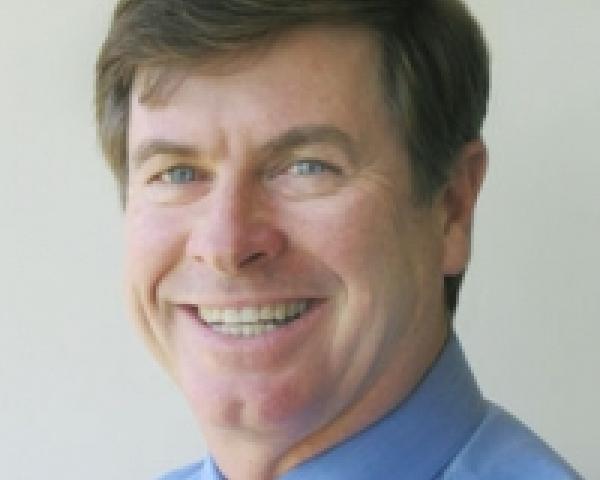
William Zachry has been the vice president of risk management for Safeway (the third largest retail grocery company in the U.S.) since 2001. He oversees Safeway's nationwide self-insured, self-administered workers' compensation program of 11 locations with 125 claims staff.
The U.S. can close the doors and watch competitiveness fall-- or welcome the world's best to boost innovation and create jobs.

 Now, as dark clouds of nativism swirl around Capitol Hill, the country's leaders face an important choice. They can play the populism card, close the doors and watch U.S. global competitiveness fall — or they can welcome the world's best and brightest to boost innovation and create jobs. Technology will advance with or without the U.S. The nation needs to decide whether it wants the innovators on its side. Other countries seeking to limit immigration should ask themselves the same question.
Global innovation
Today, internet companies in China, such as Alibaba, Baidu and Tencent, are among the most innovative and valuable in the world. Facebook has mimicked features of their products; Apple has been accused of copying Chinese innovations in the iPhone 7; and search engine Baidu's artificial-intelligence system is more advanced than Siri. Chinese scientists will soon lead the pack on applying CRISPR–Cas9 gene-editing technology (see, for instance, Nature 539, 479; 2016). India has sent an orbiter to Mars and launched a record-breaking 104 satellites from a single rocket. Its new platform for digital currencies, India Stack, may allow its financial system to leapfrog that of the West. Chilean scientists have built cheap technologies that sanitize water by temporarily changing it into a plasma phase. South Korea has built autonomous cars that it aims to have on its roads before the Pyeongchang Winter Olympic Games in 2018.
See also: Why Trump’s Travel Ban Hurts Innovation
One measure of globalization is the number of "unicorns," technology startup firms valued at $1 billion or more. As recently as 2000, nearly all of these were in the U.S.; other countries could only dream of creating a Google, Amazon or Facebook. By February 2017, of the 213 unicorns in the world, China had given birth to 55 and India 10. The U.S. is home to only 110 (Global Entrepreneurship); half of those have at least one immigrant founder. The U.S. share of unicorns is shrinking, and Silicon Valley is facing unprecedented competition.
Gone are the days when, owing to the high costs of the core technologies, U.S. and European research labs held a monopoly on large-scale innovations. Whereas early generations of supercomputers cost tens of millions of dollars, today's smartphones, which outperform them, cost as little as $30. Sensors, artificial intelligence, robotics, genomics and 3D-printing technologies are globally available and inexpensive. Anyone, anywhere, can use these to build world-changing products. Government-built walls of visas and travel restrictions are no barriers to innovation, only to economic growth.
Now, as dark clouds of nativism swirl around Capitol Hill, the country's leaders face an important choice. They can play the populism card, close the doors and watch U.S. global competitiveness fall — or they can welcome the world's best and brightest to boost innovation and create jobs. Technology will advance with or without the U.S. The nation needs to decide whether it wants the innovators on its side. Other countries seeking to limit immigration should ask themselves the same question.
Global innovation
Today, internet companies in China, such as Alibaba, Baidu and Tencent, are among the most innovative and valuable in the world. Facebook has mimicked features of their products; Apple has been accused of copying Chinese innovations in the iPhone 7; and search engine Baidu's artificial-intelligence system is more advanced than Siri. Chinese scientists will soon lead the pack on applying CRISPR–Cas9 gene-editing technology (see, for instance, Nature 539, 479; 2016). India has sent an orbiter to Mars and launched a record-breaking 104 satellites from a single rocket. Its new platform for digital currencies, India Stack, may allow its financial system to leapfrog that of the West. Chilean scientists have built cheap technologies that sanitize water by temporarily changing it into a plasma phase. South Korea has built autonomous cars that it aims to have on its roads before the Pyeongchang Winter Olympic Games in 2018.
See also: Why Trump’s Travel Ban Hurts Innovation
One measure of globalization is the number of "unicorns," technology startup firms valued at $1 billion or more. As recently as 2000, nearly all of these were in the U.S.; other countries could only dream of creating a Google, Amazon or Facebook. By February 2017, of the 213 unicorns in the world, China had given birth to 55 and India 10. The U.S. is home to only 110 (Global Entrepreneurship); half of those have at least one immigrant founder. The U.S. share of unicorns is shrinking, and Silicon Valley is facing unprecedented competition.
Gone are the days when, owing to the high costs of the core technologies, U.S. and European research labs held a monopoly on large-scale innovations. Whereas early generations of supercomputers cost tens of millions of dollars, today's smartphones, which outperform them, cost as little as $30. Sensors, artificial intelligence, robotics, genomics and 3D-printing technologies are globally available and inexpensive. Anyone, anywhere, can use these to build world-changing products. Government-built walls of visas and travel restrictions are no barriers to innovation, only to economic growth.
 Brain drain
The contributions of immigrants to tech companies are well-documented. In 1999, regional economist AnnaLee Saxenian at the University of California, Berkeley, found that Chinese and Indian executives were at the helm of 24% of the businesses started in Silicon Valley between 1980 and 1998. That proportion doubled the following decade. My research team worked with her to show that between 1995 and 2005, foreign-born innovators founded 52% of technology companies in Silicon Valley and 25% nationwide. We also showed that immigrants generated $52 billion in revenue and employed 450,000 workers in 2005. They filed the majority of patents at technology companies such as Qualcomm (72%) and Cisco (60%), and more than 40% of U.S. government-filed international patent applications had foreign authors.
Then things changed. A backlog of applications built up for employment-based visas that allow permanent residency (green cards). With sociologist Guillermina Jasso of New York University, we analyzed this backlog. As of Oct.1, 2006, there were almost half a million applicants (more than one million when family members were included). Because only about 120,000 visas are available each year, getting a green card can take a decade. We forecast that this wait would increasingly frustrate highly skilled workers, leading to a reverse brain drain.
Indeed, by 2012, my team found that immigrant entrepreneurship had stalled. The proportion of companies founded by immigrants fell nationwide to 24% and in Silicon Valley to 44%. We believe from anecdotal evidence that highly skilled workers are returning to their home countries in even larger numbers today.
[caption id="attachment_24542" align="alignnone" width="500"]
Brain drain
The contributions of immigrants to tech companies are well-documented. In 1999, regional economist AnnaLee Saxenian at the University of California, Berkeley, found that Chinese and Indian executives were at the helm of 24% of the businesses started in Silicon Valley between 1980 and 1998. That proportion doubled the following decade. My research team worked with her to show that between 1995 and 2005, foreign-born innovators founded 52% of technology companies in Silicon Valley and 25% nationwide. We also showed that immigrants generated $52 billion in revenue and employed 450,000 workers in 2005. They filed the majority of patents at technology companies such as Qualcomm (72%) and Cisco (60%), and more than 40% of U.S. government-filed international patent applications had foreign authors.
Then things changed. A backlog of applications built up for employment-based visas that allow permanent residency (green cards). With sociologist Guillermina Jasso of New York University, we analyzed this backlog. As of Oct.1, 2006, there were almost half a million applicants (more than one million when family members were included). Because only about 120,000 visas are available each year, getting a green card can take a decade. We forecast that this wait would increasingly frustrate highly skilled workers, leading to a reverse brain drain.
Indeed, by 2012, my team found that immigrant entrepreneurship had stalled. The proportion of companies founded by immigrants fell nationwide to 24% and in Silicon Valley to 44%. We believe from anecdotal evidence that highly skilled workers are returning to their home countries in even larger numbers today.
[caption id="attachment_24542" align="alignnone" width="500"] Canadian-born chemist Michelle Zatlyn co-founded the US Internet company CloudFlare.[/caption]
These are the people who set up the unicorns in countries such as China and India. Each of those companies has one or more U.S. returnees in senior leadership positions, and restrictive U.S. immigration policies put them there.
Two decades ago, it was the norm for students who came to the U.S. from China and India to want to stay. No longer. On graduating from engineering courses, most overseas students say that they will work for a short time to gain experience, then return home. Human-resource directors of companies in India and China tell me that they are flooded with CVs from students from U.S. universities. Working for an exciting start-up such as Baidu or Alibaba is more enticing than being locked into a menial U.S. position for a decade awaiting your green card.
When I visit technology centers in China and India, and increasingly in places such as Mexico City or Santiago in Chile, I see a beehive of startup activity. As well as social-media and Internet applications, overseas entrepreneurs are designing wearable medical devices, robots, drone-based delivery systems, microsatellites and agricultural-automation systems. They are building self-driving cars, solar technologies and 3D-printing systems to solve global problems.
See also: Is U.S. Losing the War for Talent?
Meanwhile, the U.S. visa backlog is climbing. I estimate that there are more than 1.5 million skilled workers in immigration limbo in the U.S. today. Each one is a lost opportunity and a waste of talent.
Everyone loses. The precarious position of foreign-national staff leaves them open to mistreatment by their employers. Rules prevent employees from changing jobs while waiting for their green cards — even to other jobs in the same company. H-1B visas for temporary stays allow employers to replace U.S. workers with people who are paid less than they should be, given their skills. This is one of Silicon Valley's darkest secrets — and it is why tech companies lobby for more H-1B visas rather than more green cards. Skilled people become frustrated as their careers stagnate. The jobs that would have been created in startups go overseas.
Unless it changes its immigration outlook, the U.S. will forgo economic benefits and jobs in a misguided effort to protect both. It will have to watch as the rest of the world leaps ahead. It doesn't have to be this way.
Embrace outsiders
The U.S. needs to expand the number of permanent-resident visas and clear the backlog. These people are already working in the country legally and have the experience and skills needed. Retaining them will boost the economy. Accelerated granting of permanent residency could be contingent on buying a house, making investments or starting companies that create jobs. Imagine the benefits of 10,000 new technology startups.
“The U.S. needs to decide whether it wants the innovators on its side.”
We need to make it easy for entrepreneurs abroad to bring startup firms to the U.S. One solution is to provide a "startup visa" as a path to permanent residency. This would perhaps be valid for five years, with an upgrade to permanent residency dependent on the firm's employment of U.S. workers. The Kauffman Foundation in Kansas City, MO, has estimated that such a visa would create 1.6 million jobs within 10 years and boost the U.S. economy by $224 billion a year.
See also: What Trump Means for Best Practices
The solution to the mistreatment of foreign workers is easy: untether the H-1B visa from the employer. Let people change jobs, and let the market decide what their salaries should be. This would remove the financial incentives for companies to replace Americans with cheaper foreign workers and would encourage them to hire the best talent.
By becoming the best place in the world for entrepreneurs to study and work in, the U.S. could again be in the driving seat of technology innovation. Then we can share the resulting prosperity in a more equitable way to mitigate the anger of the electorate.
Canadian-born chemist Michelle Zatlyn co-founded the US Internet company CloudFlare.[/caption]
These are the people who set up the unicorns in countries such as China and India. Each of those companies has one or more U.S. returnees in senior leadership positions, and restrictive U.S. immigration policies put them there.
Two decades ago, it was the norm for students who came to the U.S. from China and India to want to stay. No longer. On graduating from engineering courses, most overseas students say that they will work for a short time to gain experience, then return home. Human-resource directors of companies in India and China tell me that they are flooded with CVs from students from U.S. universities. Working for an exciting start-up such as Baidu or Alibaba is more enticing than being locked into a menial U.S. position for a decade awaiting your green card.
When I visit technology centers in China and India, and increasingly in places such as Mexico City or Santiago in Chile, I see a beehive of startup activity. As well as social-media and Internet applications, overseas entrepreneurs are designing wearable medical devices, robots, drone-based delivery systems, microsatellites and agricultural-automation systems. They are building self-driving cars, solar technologies and 3D-printing systems to solve global problems.
See also: Is U.S. Losing the War for Talent?
Meanwhile, the U.S. visa backlog is climbing. I estimate that there are more than 1.5 million skilled workers in immigration limbo in the U.S. today. Each one is a lost opportunity and a waste of talent.
Everyone loses. The precarious position of foreign-national staff leaves them open to mistreatment by their employers. Rules prevent employees from changing jobs while waiting for their green cards — even to other jobs in the same company. H-1B visas for temporary stays allow employers to replace U.S. workers with people who are paid less than they should be, given their skills. This is one of Silicon Valley's darkest secrets — and it is why tech companies lobby for more H-1B visas rather than more green cards. Skilled people become frustrated as their careers stagnate. The jobs that would have been created in startups go overseas.
Unless it changes its immigration outlook, the U.S. will forgo economic benefits and jobs in a misguided effort to protect both. It will have to watch as the rest of the world leaps ahead. It doesn't have to be this way.
Embrace outsiders
The U.S. needs to expand the number of permanent-resident visas and clear the backlog. These people are already working in the country legally and have the experience and skills needed. Retaining them will boost the economy. Accelerated granting of permanent residency could be contingent on buying a house, making investments or starting companies that create jobs. Imagine the benefits of 10,000 new technology startups.
“The U.S. needs to decide whether it wants the innovators on its side.”
We need to make it easy for entrepreneurs abroad to bring startup firms to the U.S. One solution is to provide a "startup visa" as a path to permanent residency. This would perhaps be valid for five years, with an upgrade to permanent residency dependent on the firm's employment of U.S. workers. The Kauffman Foundation in Kansas City, MO, has estimated that such a visa would create 1.6 million jobs within 10 years and boost the U.S. economy by $224 billion a year.
See also: What Trump Means for Best Practices
The solution to the mistreatment of foreign workers is easy: untether the H-1B visa from the employer. Let people change jobs, and let the market decide what their salaries should be. This would remove the financial incentives for companies to replace Americans with cheaper foreign workers and would encourage them to hire the best talent.
By becoming the best place in the world for entrepreneurs to study and work in, the U.S. could again be in the driving seat of technology innovation. Then we can share the resulting prosperity in a more equitable way to mitigate the anger of the electorate.
Get Involved
Our authors are what set Insurance Thought Leadership apart.
|
Partner with us
We’d love to talk to you about how we can improve your marketing ROI.
|
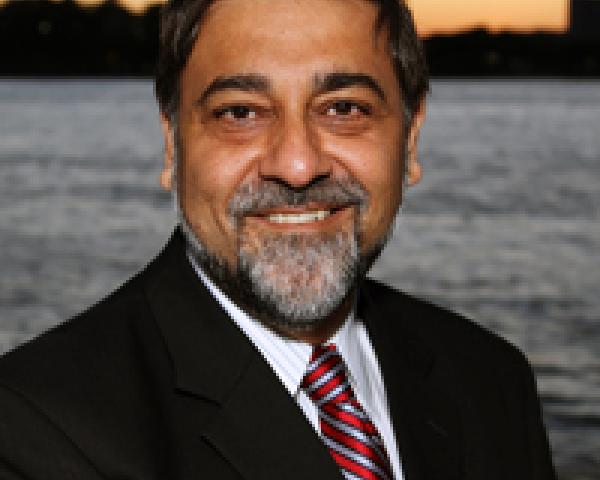
Vivek Wadhwa is a fellow at Arthur and Toni Rembe Rock Center for Corporate Governance, Stanford University; director of research at the Center for Entrepreneurship and Research Commercialization at the Pratt School of Engineering, Duke University; and distinguished fellow at Singularity University.
Insurers should focus more on the rapidly changing world of products and services, because of emerging technologies.

Get Involved
Our authors are what set Insurance Thought Leadership apart.
|
Partner with us
We’d love to talk to you about how we can improve your marketing ROI.
|
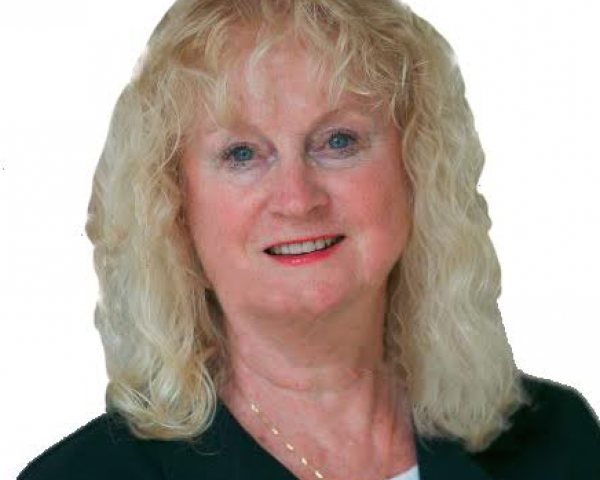
Karen Pauli is a former principal at SMA. She has comprehensive knowledge about how technology can drive improved results, innovation and transformation. She has worked with insurers and technology providers to reimagine processes and procedures to change business outcomes and support evolving business models.
Insurers are learning that they can streamline claims, and cut costs, by embracing the on-demand workforce.

Get Involved
Our authors are what set Insurance Thought Leadership apart.
|
Partner with us
We’d love to talk to you about how we can improve your marketing ROI.
|
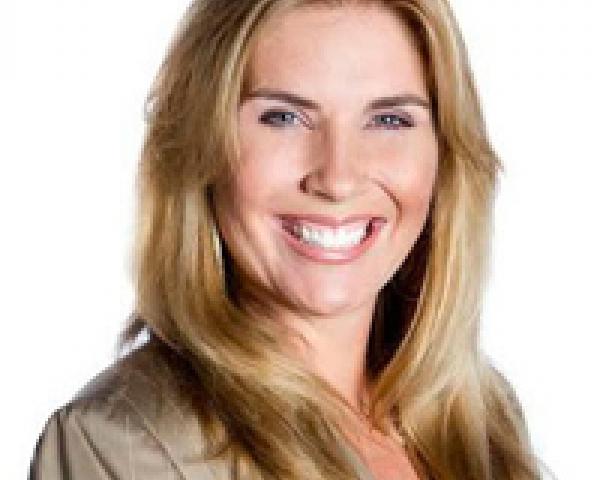
Robin Roberson is the managing director of North America for Claim Central, a pioneer in claims fulfillment technology with an open two-sided ecosystem. As previous CEO and co-founder of WeGoLook, she grew the business to over 45,000 global independent contractors.
If claims and procurement looked beyond their siloed tactical practices and collaborated, they could make critical improvements.

Get Involved
Our authors are what set Insurance Thought Leadership apart.
|
Partner with us
We’d love to talk to you about how we can improve your marketing ROI.
|

Michael Costonis is Accenture’s global insurance lead. He manages the insurance practice across P&C and life, helping clients chart a course through digital disruption and capitalize on the opportunities of a rapidly changing marketplace.
Six Things

A couple of years ago, lots of people in insurance were looking over their shoulders, because of concerns that a tech giant such as Google, Amazon or Facebook might innovate in some shocking way and take over the industry. That threat has faded, but a recent story about Tesla from a transportation news site should make us all pay attention. It suggests a possibly major change for auto insurance, and it certainly fits much more into my mental model of how innovation will happen than a full-on invasion by Google, Amazon or Facebook ever did.
Tesla is bundling car insurance with its cars, albeit, thus far, just in Australia and Hong Kong. This makes perfect sense to me. Car makers have complained for decades that they make the boxes while everyone else profits from financing, insurance, repairs and so on. Why not offer to bundle insurance at an attractive price?
Tesla has powerful advantages. The article cites a study showing that Tesla's Autopilot feature reduces accidents by 40%, and Tesla's irrepressible founder and CEO, Elon Musk, believes he can boost that figure to 90%. A huge reduction in crashes lets Tesla set prices that traditional insurers might not match, because they lack Musk's confidence in the data. Tesla also has a major edge on cost because its "Do you want fries with that?" approach to selling knocks out the commission that would go to agents, if you're a State Farm, or the huge marketing budget if you're, say, Geico. Tesla has an underwriting advantage, too: It's already tracking the actions of its cars moment by moment, so it can evaluate drivers incredibly precisely, whenever they're in control.
The Tesla approach reinforces my belief that much of insurance will become invisible. Perhaps you buy a commercial building and, as part of the transaction, take out a mortgage that includes a term life policy that lasts the length of the mortgage, to be sure your heirs would be able to keep the building. Already, when you ship rice in the developing world, you may automatically have insurance included in the cost. Various forces will try to maintain the status quo, as car insurers will surely fight Tesla, but going invisible takes out a big chunk of sales costs and simplifies underwriting, because it can be done quickly and mostly based on broad demographic data about the likelihood of a claim.
Tesla's experiment may never go anywhere. The company already has a ton on its plate, ramping up production at its crucial Gigafactory for batteries and integrating its acquisition of Solar City (also founded by Musk). That integration could well pose a problem because a maker of cars and an installer of solar panels don't have a whole lot in common, because they are both gobbling up cash at this point and because any problems could lead to charges of self-dealing, as long as a Musk company bought a Musk company for $2.6 billion at a time when Musk held 22% of the acquired company's stock. Just in case he didn't have enough things going on, Musk is still CEO of another company he founded, SpaceX, which has plans in outer space at least as ambitious as what Tesla is trying to do on the planet.
But I'd suggest you keep an eye on Tesla's foray into auto insurance—and look for other ways that insurance can be bundled like an Extra Value Meal at McDonald's.
One more quick thing before I get out of the way and turn you over to my six favorite articles from the past week: I've been mentioning The Innovator's Edge, which tracks the more than 850 insurtechs we've identified around the world. To make it easier to identify the likely winners from this pool, we're assembling a panel of distinguished judges who will identify "5 to Watch" every month, starting in mid-March. The judges will draw from the insurtech startups that have filled out our Market Maturity Review—45 and counting have done so—within Innovator's Edge. If you're an insurtech startup and want to be considered for our first list, you have about a week to go to Innovator's Edge and fill out an MMR. It only takes a few minutes and has the huge added benefit of exposing you to incumbents that are looking for sources of innovation—whether that means buying from you, partnering with you, investing in you or buying you. If you have any problems with the MMR, please contact us at info@insurancethoughtleadership.com.
Get Involved
Our authors are what set Insurance Thought Leadership apart.
|
Partner with us
We’d love to talk to you about how we can improve your marketing ROI.
|

Paul Carroll is the editor-in-chief of Insurance Thought Leadership.
He is also co-author of A Brief History of a Perfect Future: Inventing the Future We Can Proudly Leave Our Kids by 2050 and Billion Dollar Lessons: What You Can Learn From the Most Inexcusable Business Failures of the Last 25 Years and the author of a best-seller on IBM, published in 1993.
Carroll spent 17 years at the Wall Street Journal as an editor and reporter; he was nominated twice for the Pulitzer Prize. He later was a finalist for a National Magazine Award.
Fine words about protecting privacy don't mask how consumers are being denied decision-making power about their own data.

Get Involved
Our authors are what set Insurance Thought Leadership apart.
|
Partner with us
We’d love to talk to you about how we can improve your marketing ROI.
|

Paul Laughlin is the founder of Laughlin Consultancy, which helps companies generate sustainable value from their customer insight. This includes growing their bottom line, improving customer retention and demonstrating to regulators that they treat customers fairly.
In workers' comp, predictive analytics based on your historical data can measure what costs would have been without your interventions.

Get Involved
Our authors are what set Insurance Thought Leadership apart.
|
Partner with us
We’d love to talk to you about how we can improve your marketing ROI.
|

Karen Wolfe is founder, president and CEO of MedMetrics. She has been working in software design, development, data management and analysis specifically for the workers' compensation industry for nearly 25 years. Wolfe's background in healthcare, combined with her business and technology acumen, has resulted in unique expertise.
Reporting is complex, and, if the injured party fails to report properly, he runs the risk of having benefits denied.

Get Involved
Our authors are what set Insurance Thought Leadership apart.
|
Partner with us
We’d love to talk to you about how we can improve your marketing ROI.
|
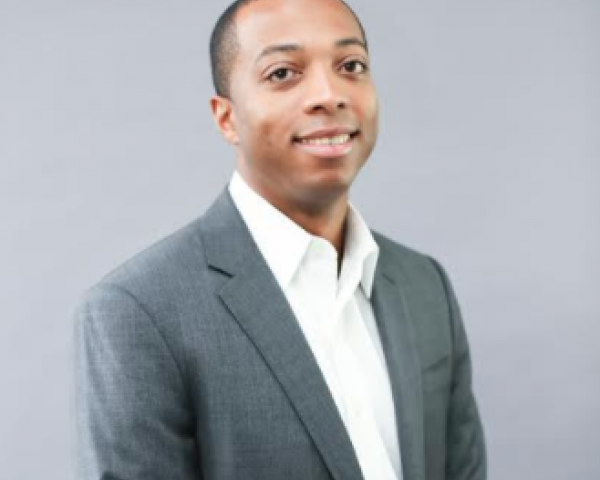
Marques is the Chief Executive Officer of Ametros, a company that provides post-settlement medical management tools to help individuals navigate healthcare. Torbert leads the rapid growth of Ametros and champions the company’s constant improvement and dedication to extraordinary service. He has extensive experience as an investor, adviser and strategist within the insurance and business services sector.

Porter Leslie is the president of Ametros. He directs the growth of Ametros and works with its many partners and clients.